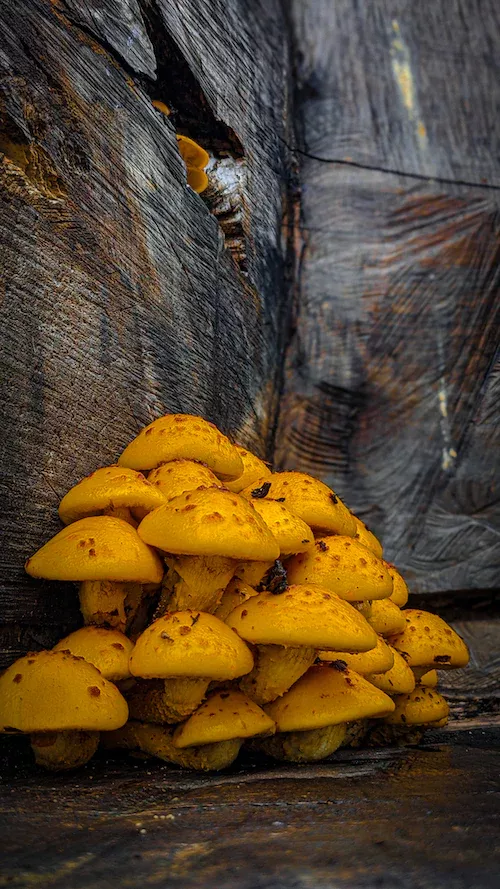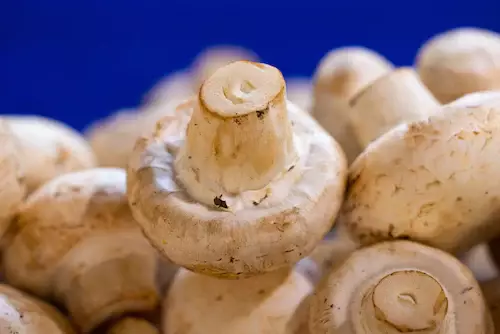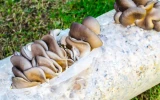What Triggers Mushroom Fruiting? (Ideal Conditions Explained)
Mushroom fruiting occurs when specific conditions are met that mimic their natural environment. These conditions include proper lighting, fresh air exchange, and the right levels of humidity. When you factor these into your setup, you can create the perfect environment for your mushrooms to fruit and thrive.
To successfully fruit your mushrooms, ensure proper ventilation or use a fan, remove excess CO2 levels, bring in oxygen, maintain humidity levels at 80–95 percent; control the mushroom species' preferred temperature, provide a consistent source of indirect light, choose the right substrate, and provide adequate nutrients.
All these ideal conditions will help you trigger mushroom fruiting and set your mushroom cultivation up for success. Each species may have specific requirements, so always research the preferences of the mushrooms you are growing. For now, let's walk you through the different factors in this guide.
Summary
- Mushrooms can sense changes in their environment, triggering the fruiting process.
- Fruiting may also be influenced by seasonal changes or weather patterns.
- The ideal conditions can vary depending on the specific type of mushroom being grown, as different species have different requirements.
- Factors such as pH, CO2 levels, and humidity fluctuations can also impact fruiting success.

On this page:
Ideal Conditions for Mushroom Fruit Formation
Mushroom fruiting is the process where the mycelium develops into the visible mushroom with a cap and stem. For successful fruiting, it's essential to provide the ideal conditions that mimic the mushrooms' natural environment. Here are the crucial factors to consider when creating the ideal conditions for mushroom fruiting:
| Factor | Ideal Condition |
|---|---|
| Humidity | 80-95% relative humidity |
| Temperature | 65-75°F (18-24°C) |
| Fresh Air Exchange | 0.5-1 air exchange per hour |
| Lighting | 12-16 hours of indirect light per day |
| Substrate | Sterilized or pasteurized substrate (e.g. straw, sawdust, compost) |
| Nutrition | A balanced nutrient mix including nitrogen, phosphorus, and potassium |
To trigger mushroom fruiting, you must establish and maintain a high humidity level, observe the ideal temperature for each species, provide fresh air exchange, and ensure a consistent source of indirect light. Carefully monitoring these factors will create the perfect environment for your mushrooms to thrive and fruit.
To successfully fruit your mushrooms, keep in mind the following key factors:
-
Fresh air exchange (FAE) plays a vital role in mushroom fruiting, so ensure proper ventilation or use a fan to maintain a healthy environment for growth.
-
Humidity levels are crucial for mushroom development, with most species requiring 80-95% humidity.
-
Temperature control is essential during the fruiting phase. Each mushroom species and strain has ideal temperature ranges that should be maintained for successful growth.
-
Indirect light is important for the fruiting phase. Unlike plants, mushrooms get their nutrients from organic matter and do not need direct sunlight for growth.
Temperature and humidity both stimulate mushroom fruiting
Most mushroom species require a high humidity level, ranging from around 80% to 95%, depending on the type of mushroom. The ideal temperature for fruiting varies with species and strains. To promote fruiting, maintain a humidity level between 80-95%.
Be mindful that if humidity levels are too high, bacteria and mold can form, harming your mycelium. Conversely, if humidity is too low, mushrooms might crack, and mycelium could dry out or die. During the initiation phase, the first four days of fruiting, you should aim for higher humidity, closer to 90%.
The ideal temperature for fruiting varies with each mushroom species and strain. For example, oyster and shiitake mushrooms have cold and warm weather strain. It is crucial to maintain the species' preferred temperature to ensure successful mushroom fruiting.
One of the most important factors in mushroom fruiting is maintaining the right temperature and humidity levels. Most mushroom species require a lower temperature than their optimal growth temperature during the colonization period, which usually corresponds to a drop in temperature and an increase in humidity in their natural environment.

Light and air circulation also trigger mushroom fruiting
Proper ventilation helps in maintaining an optimal environment for mushroom fruiting, removing excess CO2 levels, and bringing in fresh oxygen. This air exchange is one of the primary triggers for indoor mushroom fruiting.
Fresh air exchange (FAE) is a main trigger for mushroom fruiting indoors, as it requires a lower temperature than during the colonization period. In nature, this temperature drop is usually accompanied by rain, which increases the humidity level.
Adequate air circulation is crucial in promoting mushroom fruiting, as it helps to maintain low CO2 levels. You can achieve this by providing ventilation or using a fan in your growing area. Fresh air exchange not only helps with temperature regulation but also prevents the buildup of contaminants.
Although mushrooms don't rely on light for photosynthesis like plants, they still need light to regulate their growth and fruiting. Provide a consistent source of indirect light to signal your mushrooms when it's time to start fruiting.
Proper lighting and fresh air exchange are essential for mushrooms to fruit, mimicking their natural environment. While the specific light requirements vary depending on the mushroom species, generally, indirect natural or fluorescent lighting works best. Make sure to keep the light source at a safe distance to avoid overheating the fruiting chamber.
Substrate and nutrition play a role in mushroom fruiting
Mushroom fruiting is highly dependent on the substrate and nutrients available. Choosing the right substrate for your mushroom species is crucial for their growth and fruiting. Common substrates include straw, hardwood sawdust, and composted manure. By providing adequate nutrients from the chosen substrate, you can support mycelial growth and eventually fruiting.
It's essential to monitor the age and moisture content of your substrate during the fruiting phase; if the substrate is too dry, it may prevent the formation of mushroom fruits. On the other hand, if it's too wet, it could encourage contamination and harmful molds.
Common Mushroom Varieties and Their Specific Needs
Mushroom fruiting depends on various environmental factors. Identifying and maintaining the ideal conditions for each mushroom variety is essential for successful cultivation. In this section, you'll learn about the specific needs of button, shiitake, and oyster mushrooms.
Button mushrooms need a high humidity level
Button mushrooms (Agaricus bisporus) are among the most popular and widely cultivated mushrooms. Providing the right conditions can help you achieve a bountiful harvest.
- Temperature is crucial for button mushrooms, with 70-75°F (21-24°C) being ideal during the spawning phase and 62-68°F (16-20°C) during the fruiting phase.
- It's also essential to maintain a high humidity level of around 90-95% to stimulate fruiting.
- Button mushrooms grow in the dark, but they still need light during the fruiting phase, which acts as a pinning trigger. Using indirect sunlight or ambient room lighting is usually sufficient.
Shiitake mushrooms require lighting to fruit
Shiitake mushrooms (Lentinula edodes) are another popular gourmet variety. These mushrooms typically grow on hardwood logs, but you can also use sawdust or other similar substrates for cultivation.

- Shiitake mushrooms prefer a temperature range of 73-81°F (22-27°C) during the growing phase and 55-60°F (12-15°C) for fruiting.
- Humidity should be maintained at around 90%.
- Shiitake mushrooms also require light to initiate pinning, although not as much as other varieties. Using indirect sunlight or ambient room lighting should be enough for shiitakes to fruit.
Oyster mushrooms need proper air exchange
Oyster mushrooms (Pleurotus spp.) are known for their taste and versatility. They grow on substrates like straw, woodchips, or coffee grounds.
- Oyster mushrooms require a temperature range of 65-75°F (18-24°C) for their growth and fruiting phases.
- It's necessary to maintain humidity levels between 85-95% and provide proper air exchange to prevent CO₂ buildup.
- Light is a crucial factor for oyster mushrooms' fruiting, as it helps initiate pinning and improve their overall form. Provide them with indirect sunlight or ambient room lighting to achieve the best results.



